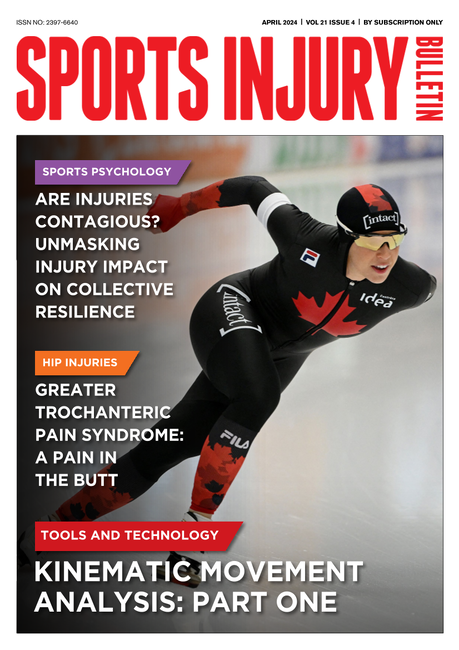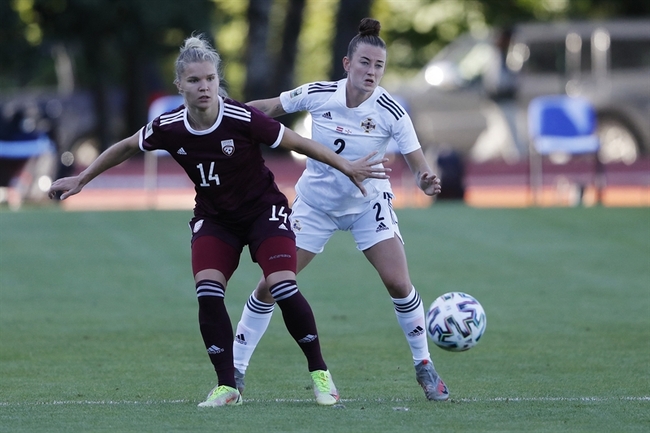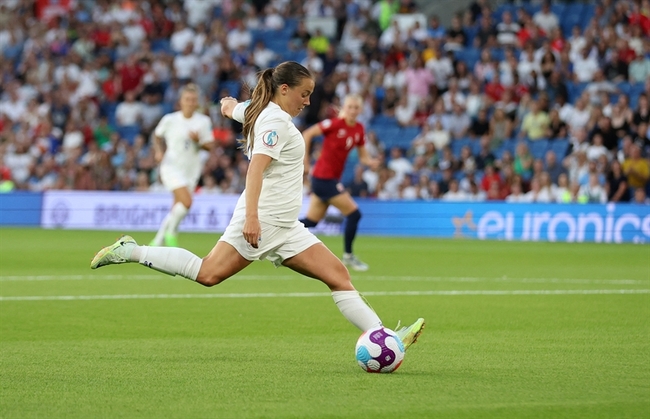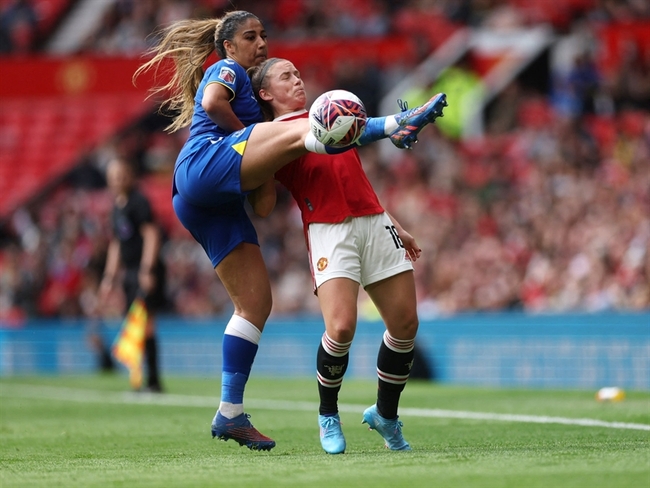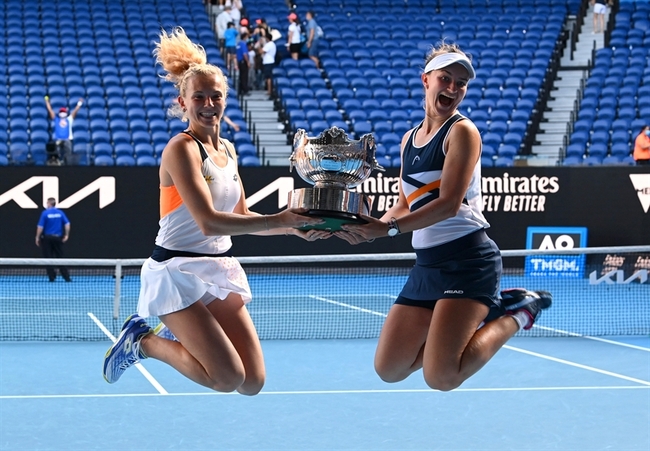Hop to it: adding a single-leg vertical hop to post ACL repair assessment
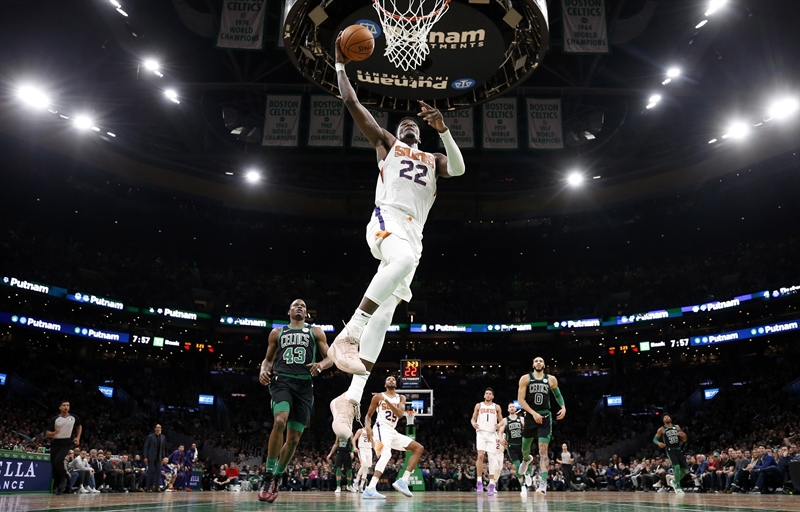
Anterior cruciate ligament (ACL) tears continue to plague athletes in greater numbers each year(1). Unlike some athletic injuries, ACL tears, once healed or repaired, continue to impact future physical activity and joint health. A majority of athletes (around 60%) never return to a competitive level of sport(1). While there may be several reasons for this, one is the fear of reinjury. This fear is well-founded, given that nearly 30% of athletes suffer a reinjury shortly after returning to play(1).
To help prevent reinjury, many clinicians put post-ACL repair patients through a battery of tests designed to detect asymmetries between the injured limb and the healthy limb, reaction time, neuromuscular function, and readiness to return to sport. For the best injury prevention outcomes, clinicians desire near symmetry between the legs during functional tests like the single-leg hop test series. These tests, though helpful, primarily asses horizontal hopping strategies. However, many sports with a higher risk for ACL injuries, such as basketball and volleyball, require more vertical jumping. Therefore, a multi-center study investigated whether the single-leg vertical hop (SLVH) revealed performance and biomechanical deficits not detected in the usual horizontal hopping test battery(1).
The study examined 12 female subjects post-ACL repair with an average time since surgery of 4.7 years. The subjects had a variety of graft sources, including patellar tendon (25%), hamstring (50%), quadriceps tendon (8%), and cadaver allografts (17%). All subjects wore standardized footwear and retroreflective markers for the three-dimensional biomechanical analysis. After a static calibration trial, the subjects performed three maximal single-leg vertical jumps toward a pre-established target.
The investigators recorded the biomechanical data beginning when the vertical center of mass descended to prepare for the jump until toe-off. The participants then completed the single-leg hop, the single-leg triple hop, the crossover triple hop, the crossover triple hop, and the 6m timed single-leg hop test.
The analysis of the test results included MANOVAs of the SLVH to determine asymmetries between legs in joint kinematics, peak joint moments, and joint impulses. The researchers found significant differences between legs during the SLVH, the triple hop for distance, and the 6m timed hop, but not during the single-hop for distance or the crossover triple hop. During the SLVH, the involved limbs demonstrated lower peak angle dorsiflexion and knee abduction angles than the healthy legs.
Performance during the single hop, the triple hop, and the crossover triple hop for distance all correlated strongly, meaning that results from one test were similar to the others. Meanwhile, the SLVH and the 6m timed hop test only correlated weakly with the others. Therefore, putting an athlete through an extended battery of horizontal hop tests may be unnecessary since they reveal similar information.
However, the SLVH uncovered deficits in the injured limb that weren’t detected in the horizontal hop tests. (The researchers only measured distance and time with the horizontal tests, not movement quality. Therefore, it’s unknown whether a motion analysis could detect similar differences between legs during horizontal hop tests.) The limited dorsiflexion angle in the involved limb during the jump may signify a limitation in range of motion. However, the more likely scenario is that lowering the center of mass on the injured side during the jump preparation was more difficult. Thus, the subjects didn’t squat as far during the countermovement portion of the jump resulting in less observed dorsiflexion.
Practical applications
Firstly, when testing athletes using traditional single-leg hop tests, clinicians may need only administer either the single, triple, or crossover triple hop test to assess progress. Secondly, the addition of an SLVH may demonstrate further inequalities in the performance between the two limbs. The challenge, however, is how to detect these changes without a motion-sensor lab. One way is to videotape maximal single-leg jumps on each leg, then freeze-frame the lowest point in the countermovement before jumping. Compare ankle dorsiflexion and squat depth on each side.The video method will help you visualize the movement strategies on each leg. If you suspect differences, analyze the neuromuscular control and ankle range of motion achieved during a single-leg squat – a movement that mimics the SLVH preparation phase. Discrepancies in the depth of the squat will make neuromuscular control challenges obvious. While the SLVH needs more study before inclusion in a standardized return-to-play assessment, clinicians can implement this measure as a treatment strategy as well as a test of movement quality, strength, progress, and neuromuscular control.
Reference
- Clinical Biomechanics. 2020 July; doi.org/10.1016/j.clinbiomech.2020.105107
You need to be logged in to continue reading.
Please register for limited access or take a 30-day risk-free trial of Sports Injury Bulletin to experience the full benefits of a subscription. TAKE A RISK-FREE TRIAL
TAKE A RISK-FREE TRIAL
Newsletter Sign Up
Subscriber Testimonials
Dr. Alexandra Fandetti-Robin, Back & Body Chiropractic
Elspeth Cowell MSCh DpodM SRCh HCPC reg
William Hunter, Nuffield Health
Newsletter Sign Up
Coaches Testimonials
Dr. Alexandra Fandetti-Robin, Back & Body Chiropractic
Elspeth Cowell MSCh DpodM SRCh HCPC reg
William Hunter, Nuffield Health
Be at the leading edge of sports injury management
Our international team of qualified experts (see above) spend hours poring over scores of technical journals and medical papers that even the most interested professionals don't have time to read.
For 17 years, we've helped hard-working physiotherapists and sports professionals like you, overwhelmed by the vast amount of new research, bring science to their treatment. Sports Injury Bulletin is the ideal resource for practitioners too busy to cull through all the monthly journals to find meaningful and applicable studies.
*includes 3 coaching manuals
Get Inspired
All the latest techniques and approaches
Sports Injury Bulletin brings together a worldwide panel of experts – including physiotherapists, doctors, researchers and sports scientists. Together we deliver everything you need to help your clients avoid – or recover as quickly as possible from – injuries.
We strip away the scientific jargon and deliver you easy-to-follow training exercises, nutrition tips, psychological strategies and recovery programmes and exercises in plain English.


